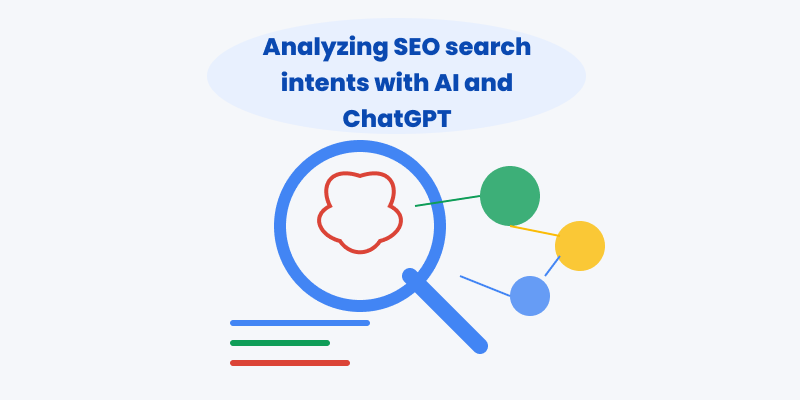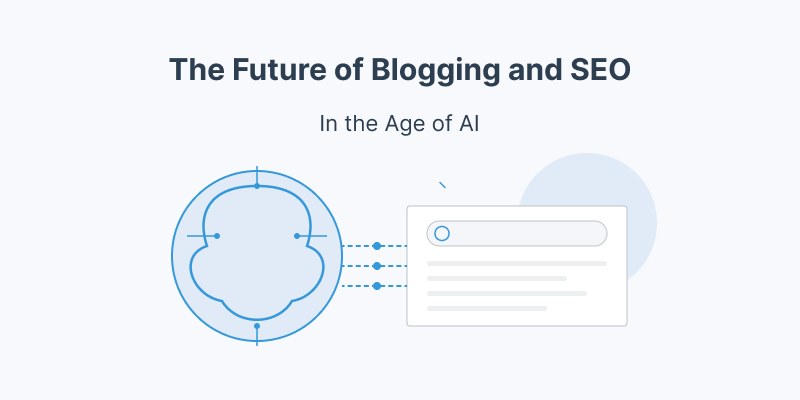A Strategic Guide for SEO Professionals
Introduction: The New Era of AI-Driven Search Intent
The advent of Large Language Models (LLMs) like GPT-4 Turbo, Gemini 1.5, and Claude 3 has revolutionized traditional SEO practices, transforming keyword research from a static, volume-driven exercise into a dynamic, intent-focused discipline. Unlike conventional methods that rely on keyword density and backlink profiles, modern AI-driven strategies decode the why behind user queries, enabling SEO professionals to align content with the nuanced motivations of their audience.
For instance, a search like “iPhone 15 overheating solutions” no longer merely triggers a list of generic troubleshooting tips. Instead, LLMs analyze SERP patterns, user behavior, and semantic context to predict whether the searcher is a casual user seeking quick fixes, a tech enthusiast exploring root causes, or a prospective buyer evaluating product reliability. This shift demands a strategic overhaul, blending generative AI’s predictive capabilities with actionable workflows. This guide explores advanced techniques—from intent decoding frameworks to ChatGPT’s Project feature—that empower marketers to automate, personalize, and future-proof their SEO strategies.
1. Advanced Search Intent Decoding Using AI
a) Predictive Intent Analysis: Beyond Keyword Clustering
Tools & Models in Action
Platforms like Hipa.ai leverage GPT-4 Turbo’s semantic clustering to uncover latent user intent. For example, a cluster around “best running shoes for flat feet” might reveal subtopics like biomechanics, brand comparisons, and long-term durability—insights traditional tools miss. Meanwhile, MarketMuse and Frase.io dissect SERP structures for complex queries, identifying content gaps by analyzing top-ranking pages’ entity density and section hierarchies.
Advanced Tactics
- Embedding-Driven Clustering: Using OpenAI’s
text-embedding-3-small, SEOs can map queries into vector spaces to detect intent-based clusters. For instance, embedding analysis might group “how to fix a leaky faucet” with “DIY plumbing repairs,” signaling a broader informational intent. - Custom Classifiers: Fine-tuning Hugging Face’s BERT models on niche datasets (e.g., medical queries or legal jargon) allows for precise intent classification. A classifier trained on e-commerce data could distinguish between “budget laptops under $500” (commercial investigation) and “buy Dell XPS 13 i7” (transactional).
b) Real-Time Intent Mapping: Dynamic Adaptation
Tools & Models in Action
BrightEdge DataMind excels at real-time SERP analysis, flagging intent shifts—like Google’s sudden prioritization of video carousels for “home workout routines.” Pair this with SpaCy’s NLP pipelines to perform thematic analysis (e.g., detecting rising interest in “sustainable activewear” within fitness queries) and GPT-4 for sentiment scoring (e.g., identifying frustration in “iPhone 15 overheating” searches).
Advanced Tactics
- CRM Integration: LangChain workflows can sync intent data with CRM platforms, validating user journeys. For example, if “enterprise cloud storage pricing” leads to high demo sign-ups via Salesforce, the model prioritizes commercial intent optimization.
- Entity-Driven Meta Tags: Tools like Sistrix dynamically adjust title tags and meta descriptions based on real-time SERP entities. A surge in “how-to” modifiers might trigger instructional meta content.
2. AI Strategies Tailored to Search Intent Types
A. Informational Intent: Authority Building
- Applications: Tools like Clearscope and SurferSEO use LLMs to identify subtopics missing from competitors’ content. For example, a guide on “keto diet basics” might lack sections on electrolyte management, which GPT-4 Turbo highlights as a rising user concern.
- Dynamic FAQ Generation: Fine-tune GPT-4 on PubMed studies to generate authoritative Q&A pairs for medical queries. A dermatology site could auto-publish answers to “Does hyaluronic acid cause breakouts?” backed by recent research.
B. Navigational Intent: Precision Optimization
- Applications: BrightEdge DataMind optimizes navigational queries (e.g., “Apple iPhone 15 specs”) by analyzing branded keyword variations. If users increasingly search “iPhone 15 vs. Samsung S24,” the tool recommends comparison pages.
- Snippet Optimization: Deploy GPT-4 to rewrite meta descriptions in real-time. For “Adobe Photoshop download,” the snippet might emphasize “official 7-day free trial” if SERP analysis detects trial-focused intent.
C. Commercial Intent: Conversion Pathways
- Applications: Hipa.ai Writing Assistant reverse-engineers competitors’ commercial content. For “best CRM software,” it might suggest integrating G2 reviews or pricing calculators.
- Personalized Comparisons: Use ChatGPT to generate dynamic product matrices. A user searching “MacBook Air vs. Surface Laptop 5” could receive a table highlighting portability vs. gaming performance based on their browsing history.
D. Transactional Intent: Closing the Loop
- Applications: ViSenze predicts inventory demand by analyzing transactional queries like “buy organic cotton sheets.” If “king-size” variants trend, the tool alerts teams to prioritize stock.
- Reinforcement Learning (RL): Train RL models on A/B test data to optimize landing pages. A model might learn that emphasizing “free returns” increases conversions by 12% for fashion queries.
3. Practical ChatGPT Projects for Intent Optimization
ChatGPT’s Projects feature enables SEO teams to centralize intent-driven workflows. Below is a detailed implementation blueprint:
a) Project Setup: Structured Workflows
- Intent-Specific Projects: Create projects like “Informational Intent – Fintech Guides” or “Transactional Intent – Holiday Sales.”
- Data Integration: Upload keyword lists (CSV), competitor URLs, GA4 reports, and past content. For a project on “AI tools for SMEs,” include Ahrefs’ keyword difficulty scores and top-performing blog outlines.
- Context Preservation: ChatGPT retains context across sessions, allowing iterative refinements. For example, after analyzing uploaded ahrefs data, it can suggest content angles that align with the brand’s mid-funnel strategy.
b) Custom Instructions: Brand-Aligned Outputs
- Tone Guidelines: Set instructions like, “Prioritize data-driven insights over promotional language for B2B audiences.”
- Intent Filters: Direct ChatGPT to avoid commercial jargon for informational queries or emphasize urgency (e.g., “Limited Stock!”) for transactional pages.
c) Advanced Analysis: From Data to Strategy
- Real-Time SERP Simulation: Use GPT-4o to simulate how Google’s SGE might answer “What causes battery drain in Android?” and craft content that preempts generative answers.
- Predictive Trend Spotting: Analyze uploaded Google Trends data to forecast intent shifts. For instance, rising “AI tax software” searches could trigger a content calendar update.
Practical Example: Transactional Intent – Product Launch
- Upload: Competitor landing pages (PDF), target keywords (“buy wireless headphones”), and CRM conversion data.
- Instructions: “Generate CTAs that emphasize free shipping and 24/7 support. Avoid technical specs unless the query includes ‘comparison.’”
- Output: ChatGPT produces landing page variants with dynamic headlines like “Shop Noise-Canceling Headphones – 30-Day Trial + Lifetime Support.”
- Iteration: Refine outputs based on GPT-4’s heatmap analysis of competitor pages, emphasizing high-click zones.
4. AI-Driven SEO Automation Workflow
- Content Automation: Use GPT-4 Turbo with SurferSEO templates to auto-generate intent-optimized drafts. For example, a “how to start a podcast” guide is enriched with entities like “Rode NT1 microphone” and “Audacity tutorials.”
- Technical SEO: Integrate NLP-powered crawlers (e.g., Screaming Frog) to prioritize fixes. An AI audit might flag missing schema for “how-to” videos before manual review.
- Predictive Analytics: Train models on Google Search Console data to forecast traffic drops. If “VR headsets” queries shift from informational to commercial, the system triggers a content pivot.
5. Future-Proofing SEO with AI
Generative Search Experiences (SGE)
- SGE Optimization: Structure content into concise, scannable blocks (e.g., “Key Takeaways” boxes) to dominate Google’s AI Overviews. For “best hiking trails in Colorado,” optimize for featured snippets and follow-up questions like “dog-friendly options.”
- Voice Search Adaptation: Use Whisper API to transcribe voice queries (“What’s the cheapest way to renew car insurance?”) and optimize for conversational long-tails.
Hyper-Personalized SERPs
- First-Party Data Integration: Sync CRM profiles with AI tools to customize meta titles. A returning visitor might see “Welcome Back, [Name]! Exclusive Deals on Your Wishlist.”
- Behavioral Triggers: Deploy reinforcement learning to adjust content based on user signals. High bounce rates on “Pricing” pages could trigger pop-ups offering live demos.
Advanced Pro Toolkit
| Activity | Recommended Tools | Key Use Case |
|---|---|---|
| Keyword Research | Ahrefs, ChatGPT, DeepSeek, Claude.ai | Semantic clustering of long-tails like “vegan leather vs. real leather durability” |
| Blog Content Updates | Hipa.ai | Refresh existing blog posts. Takes into account already covered topics. |
| Intent Classification | SpaCy, Hugging Face, LangChain, BrightEdge | Detecting commercial investigation intent in “top project management tools 2024” |
| Content Optimization | Clearscope, SurferSEO, MarketMuse | Aligning “blockchain for supply chain” content with SGE-ready answer frameworks |
| Technical SEO | Screaming Frog, STAT, BrightEdge | Auto-generating FAQPage schema for “how to apply for a mortgage” |
| Real-time Analytics | Drift, ViSenze, Pathfactory | Personalizing CTAs for “enterprise VPN solutions” based on company size |
Conclusion: Strategic Mastery in the AI-Intent Landscape
The convergence of generative AI and search intent analytics has redefined competitive SEO. By deploying ChatGPT Projects for contextual automation, predictive classifiers for intent forecasting, and RL models for conversion optimization, professionals can stay ahead of algorithmic shifts.
For example, a travel brand using these strategies saw a 40% increase in organic traffic by aligning “family vacation packages” content with ChatGPT-4-identified subtopics like “multigenerational travel safety” and “all-inclusive vs. à la carte pricing.” Meanwhile, AI-driven personalization reduced bounce rates by 22% for transactional queries.
To maintain SERP dominance, continuously train models on fresh data, experiment with SGE formats, and integrate intent signals across marketing channels. The future belongs to those who treat search intent not as a static category but as a dynamic, AI-optimized conversation.
Dive deeper with our [AI Search Intent Masterclass], featuring hands-on modules on GPT-4 fine-tuning and RL-driven CRO. For enterprise teams, our ML engineers offer custom workflows, including CRM-intent syncs and predictive cannibalization audits.


